By Dan Weisz
For the last few weeks, a bird called a “Tricolored Heron” has been seen at Lakeside Park in SE Tucson. This is a sleek heron which, as its name implies, is feathered in three different colors. Its back is a blue/gray, it has white feathers and this bird also has a reddish-brown neck and wing feathers. The neck colors indicates this is a juvenile. The white belly and white stripe down its neck is a feature that other dark herons do not have.
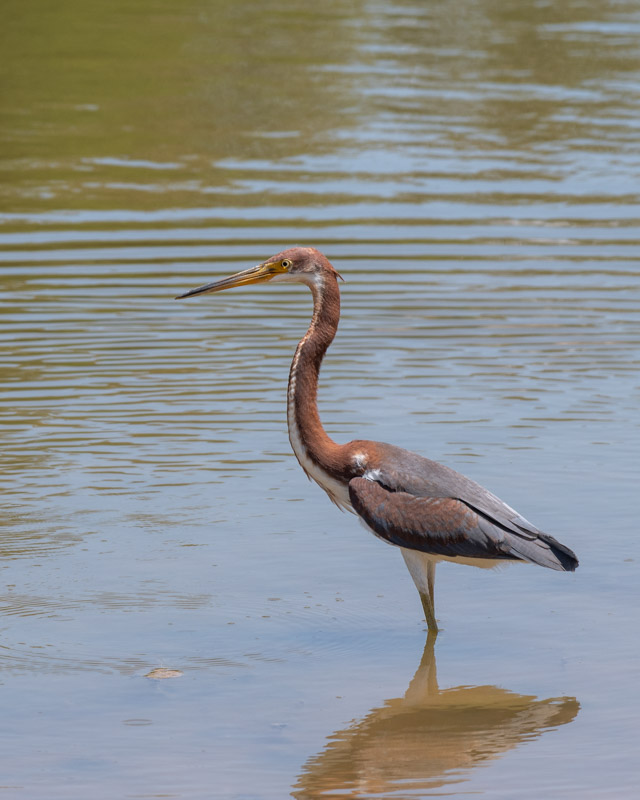
This is a bird seen only every few years in our area. From its range map, you can see that it is a bird of coastal waters. This particular bird might have been blown in during a recent Tucson rain event. At some point soon, the Tricolored Heron will decide to head back home, presumably to the Gulf of California.
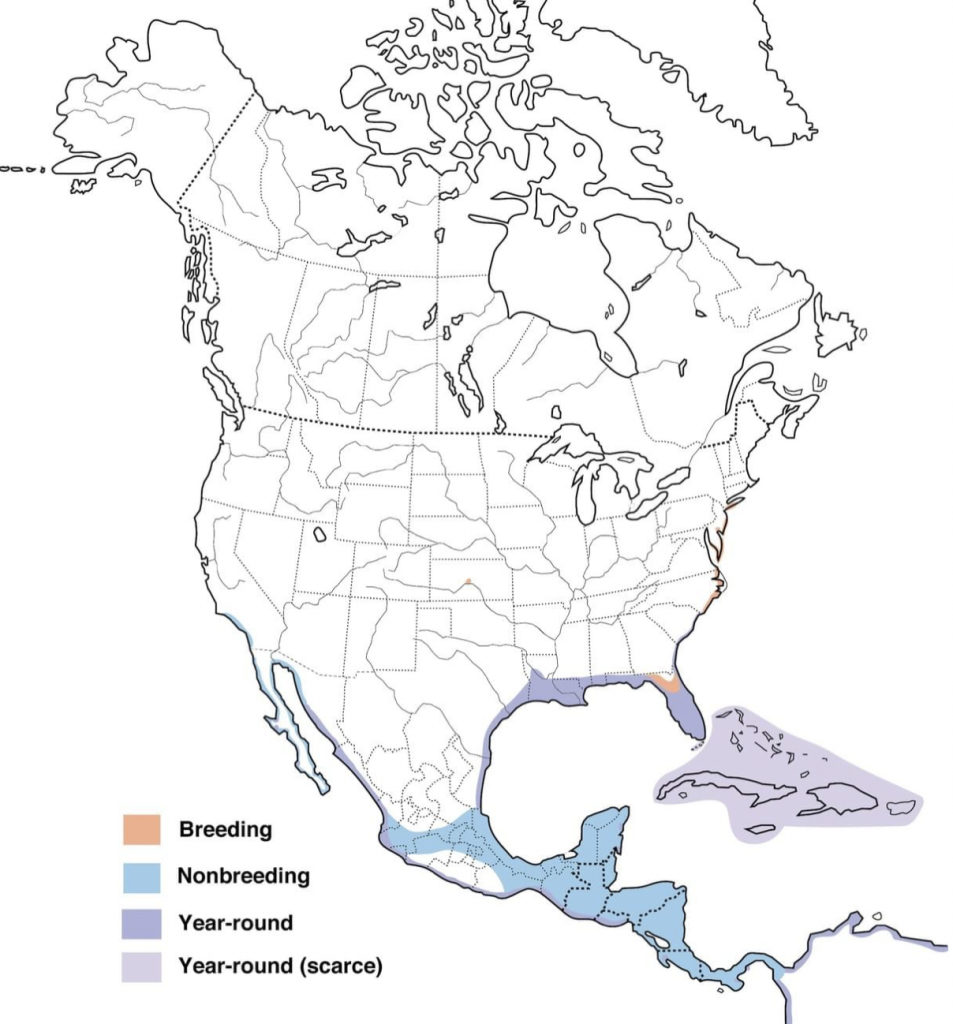
Originally, this bird was called the Louisiana Heron as it is common in ocean estuaries in states along the Gulf of Mexico and up through the Carolinas. It is also common along the west coast of Mexico in the Gulf of California, where this particular bird likely originated.
John J. Audubon described the Louisiana Heron as follows: “Delicate in form, beautiful in plumage, and graceful in its movements, I never see this interesting Heron, without calling it the Lady of the Waters.” Below is a portrait of the Lady of the Waters at Lakeside Park. Note its very long beak and its “S” shaped and rusty neck
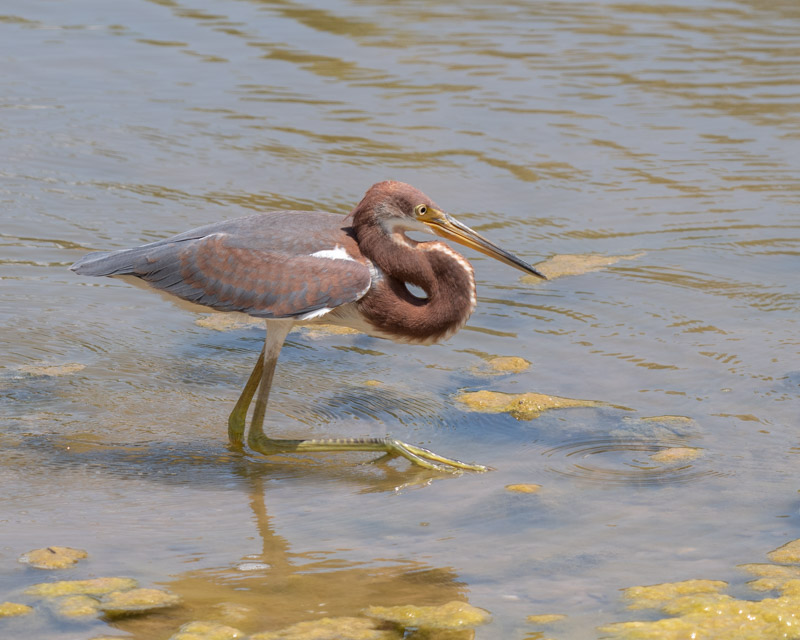
Tricolored Herons use a technique called “shadow hunting”. They spread their wings to create a large shadow in the water. That shadow entices fish to swim towards it, thinking they are heading under the shelter of a large plant. When they swim out into the open towards the shadow, they are then snatched by the heron.
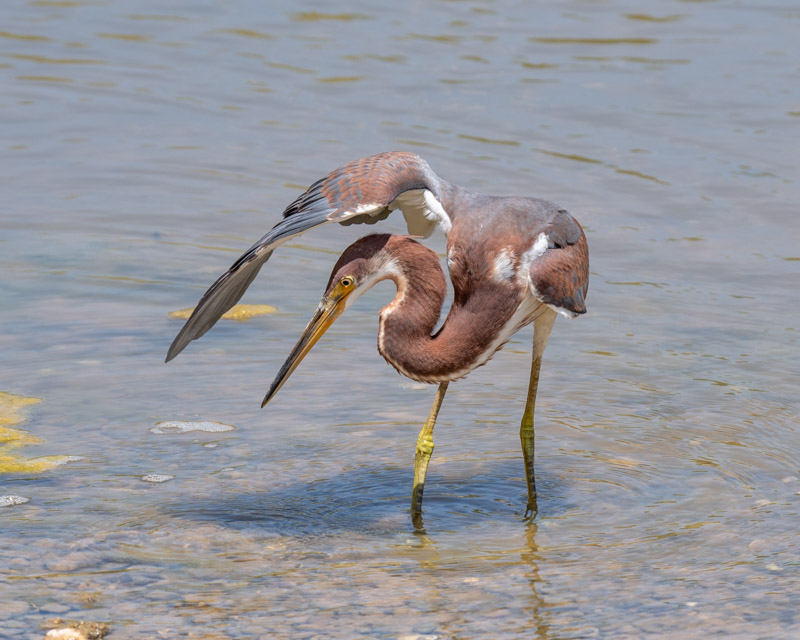
And it is ready to strike. Look at that concentration!
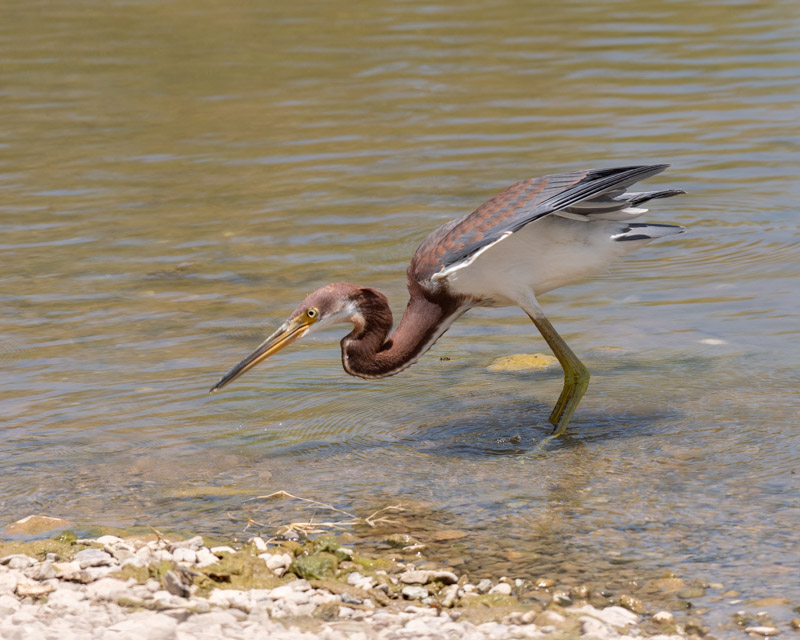
I’m not sure what the heron was doing here, perhaps shadow fishing, but it walked slowly with its wings flared. I like the look of the separated wing feathers and the neck feathers fluffed out. I couldn’t help being fascinated watching it continually hunt. It had a very active and “jittery” hunting style and never stopped hunting for the hour that I watched it. It must take alot to fill that big bird’s belly. Its long toes made it look as if it were tip-toeing through the water.
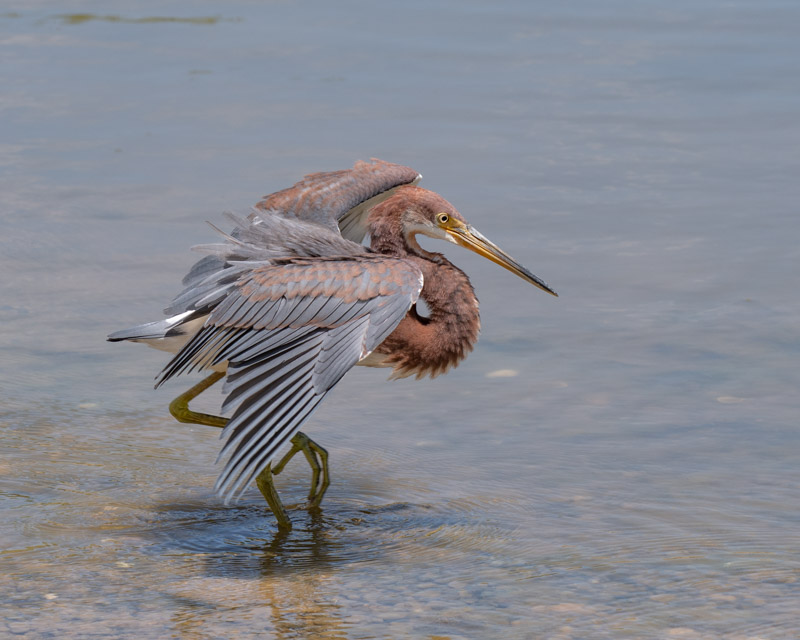
I saw the heron grab many tiny fish but at one point it caught a much larger fish right at the edge of the thick algae at the north end of the lake. Look at the vegetation it is walking through! The heron carried the fish to land where it could more easily work on swallowing it. Notice how the fish’s tail is sticking out of the left side of the heron’s large bill?
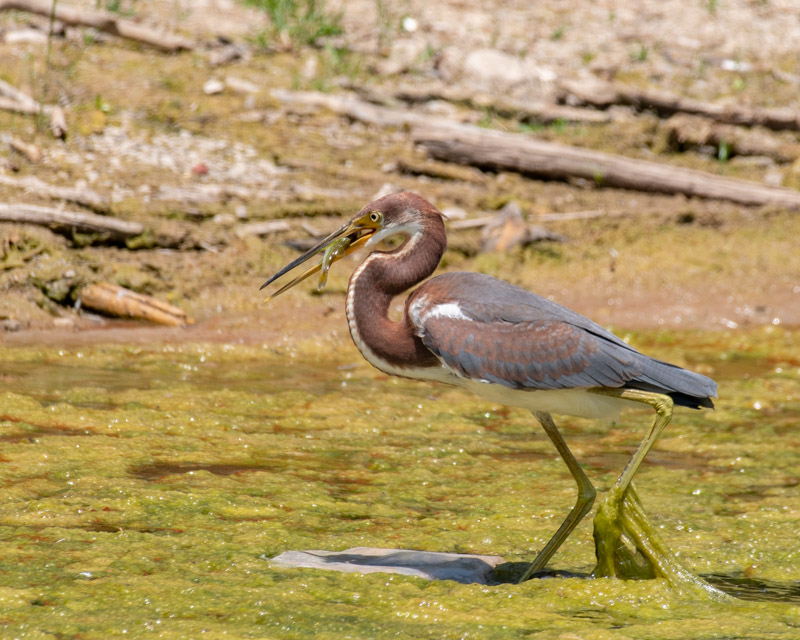
And now see that the fish has been turned around. Its tail is now sticking out the right side of the heron’s bill. The heron had tried manipulating the fish in air, then dropped it onto the ground only to pick it up again. On land and facing us, the heron’s white belly is very apparent now.
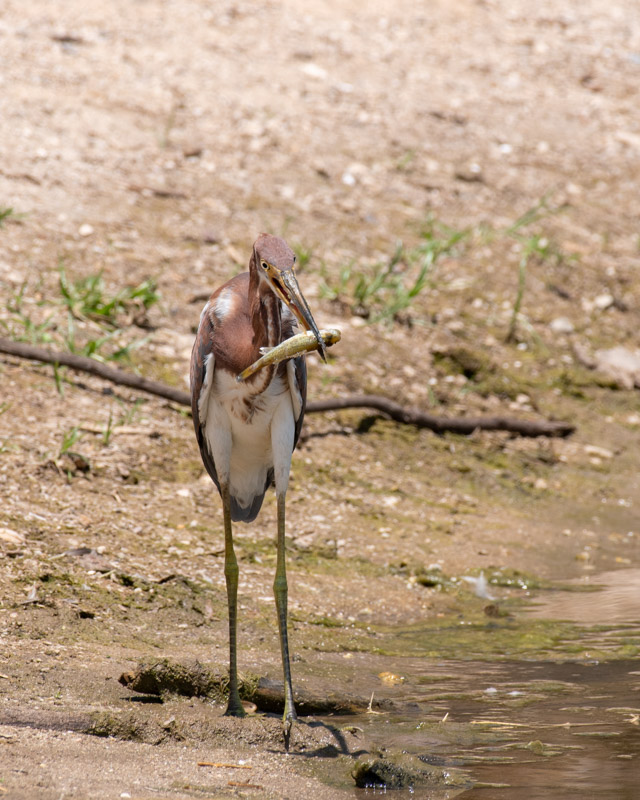
Then the heron flipped the fish up and down the hatch it went!!
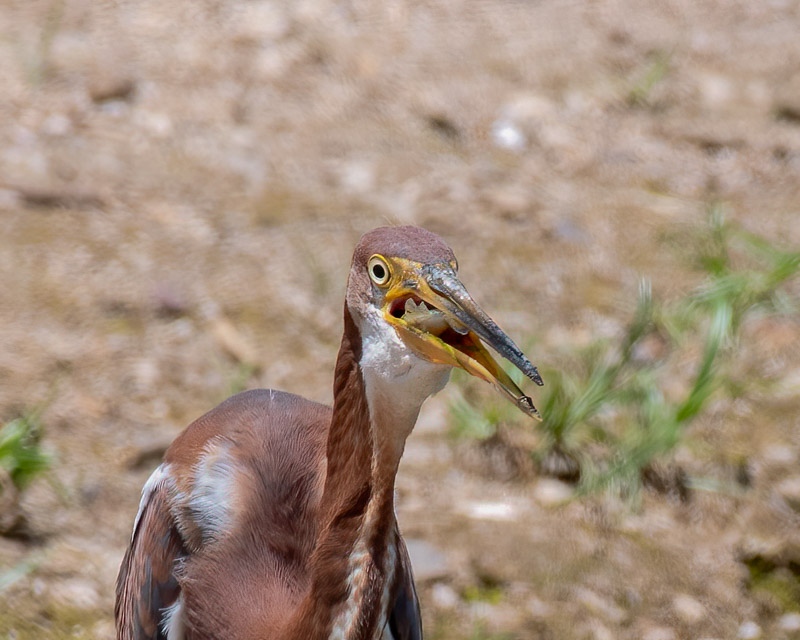
The heron did some wing stretches, as if it were washing up after a meal. It lifts its left leg straight while stretching its left wing.
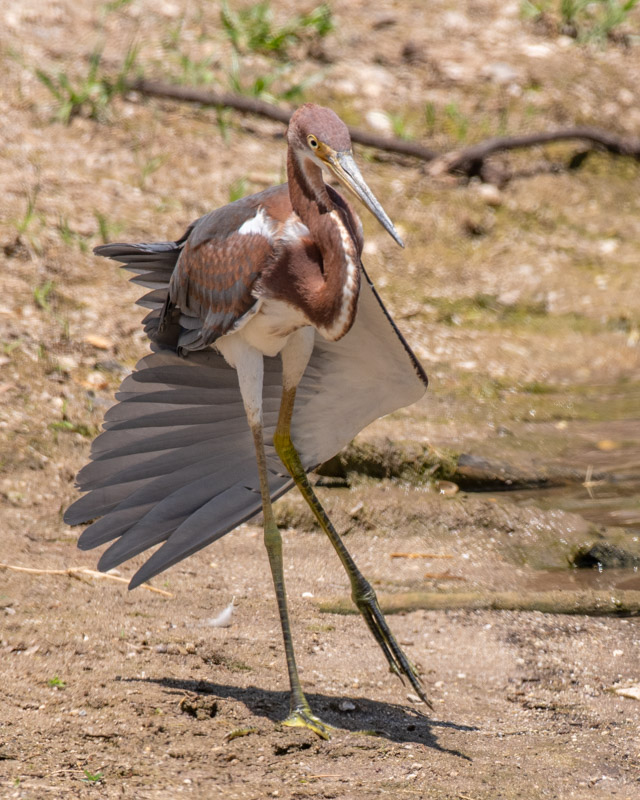
It returned to the lake and then stretched both wings above its head. I love this shot because it is so unusual. I’ve seen, photographed, and shared many pictures of birds from raptors and owls to ducks and hummingbirds doing this same stretch, called a ‘warble’. The heron stretched its wings upwards and its head forward as far as it could stretch. What a loooong neck!
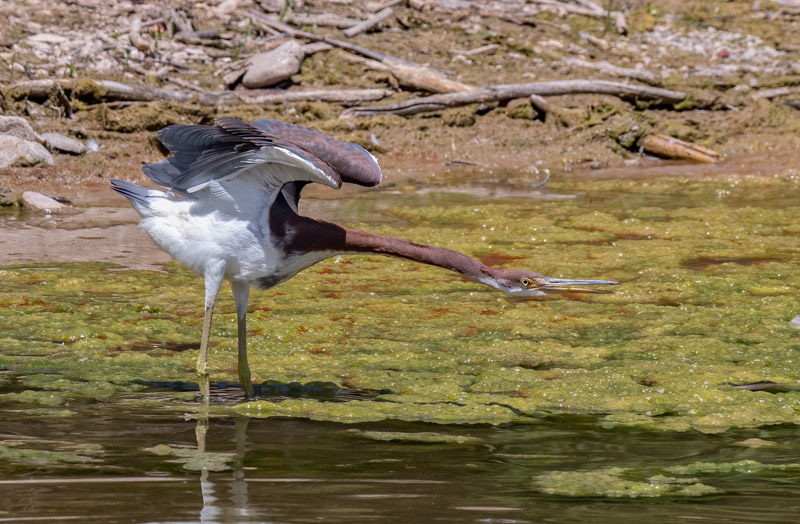
And then it was back to finding food. Here, the Tricolored Heron seems to be resting its neck on the water as it stabs its prey.
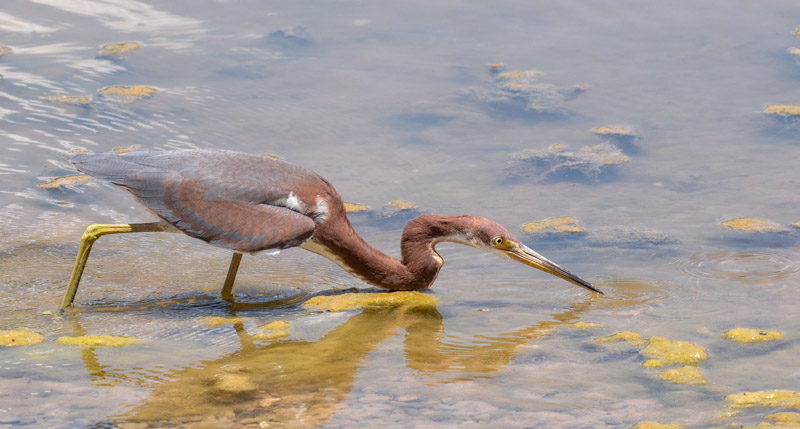
This bird is definitely in attack mode.
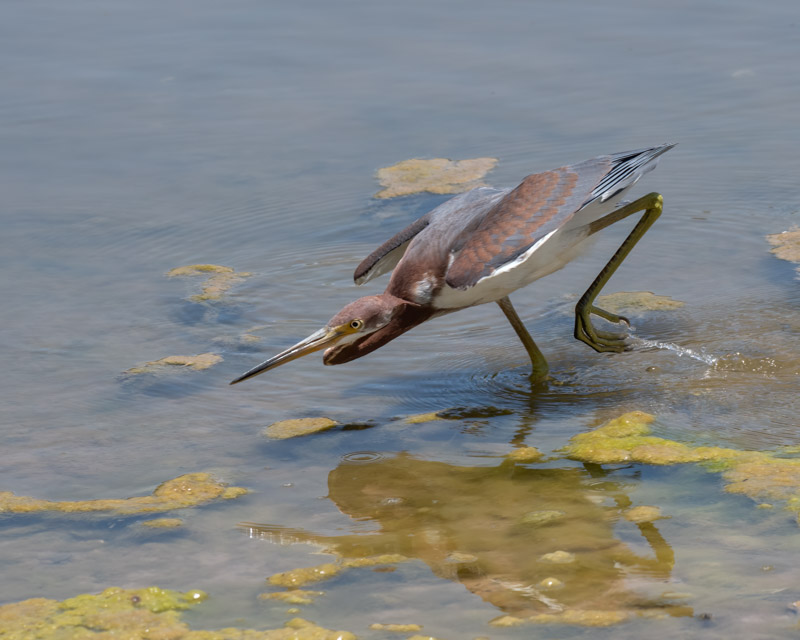
I had been watching the Tricolored Heron hunt for a while when I wondered to myself whether or not it ever caught or ate dragonflies. Although I took this photo, I did not see what the bird had grabbed until I got home and processed the photos. It did catch a dragonfly! But subsequent photos showed that it almost immediately dropped it back into the water and left it floating there. For whatever reason, it chose not to eat the dragonfly.
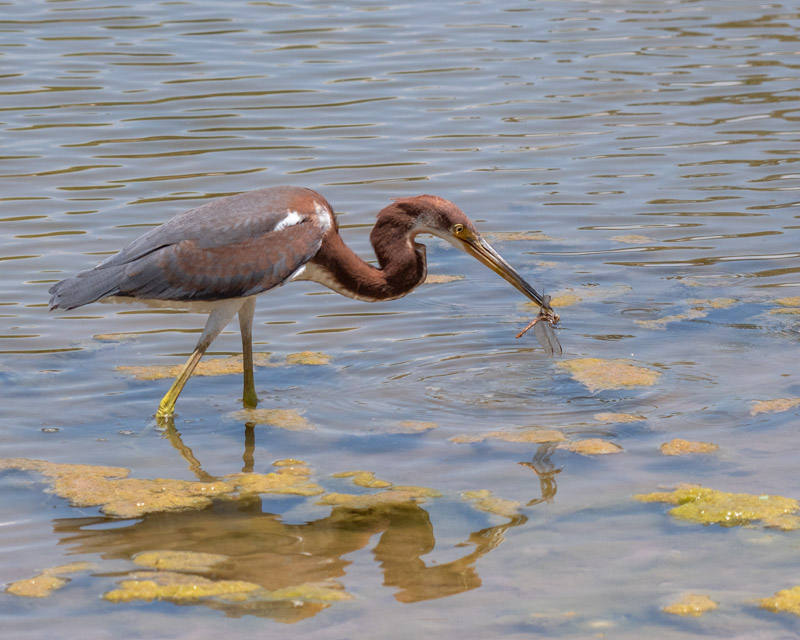
This one final photo and hunting shot reminds me of Daniel in the movie “Karate Kid”. Mr Miyagi taught this move to Daniel which he then used to defeat his arch rival. In the movie, this is called a “crane kick”. In the “real world”, cranes belong to a different family of birds from herons and egrets. Our Tricolored Heron (and other herons and egrets) have S-shaped necks which they fold while in flight. Cranes can bend their necks but not into a tight S-shape and they fly with their necks outstretched.
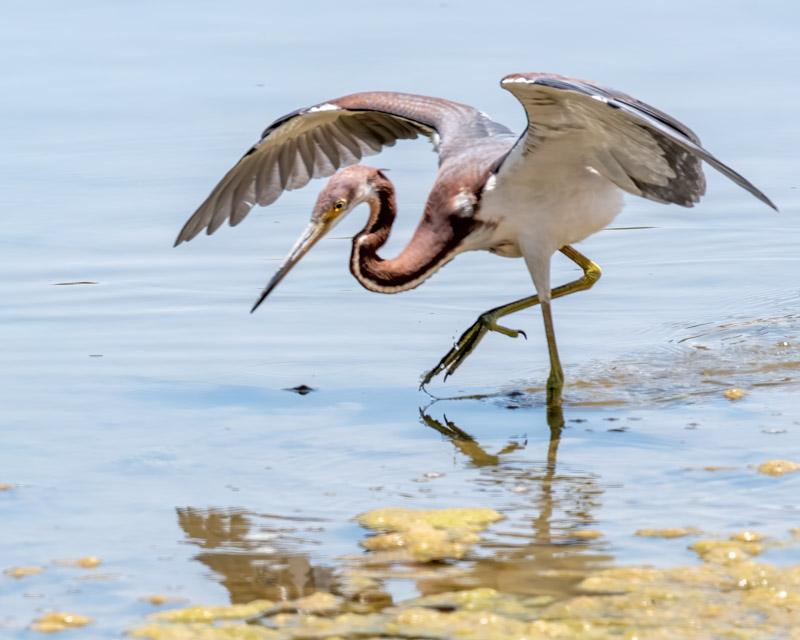
We are more likely to see other herons in Tucson regularly. We have Great Egrets, Snowy Egrets, Great Blue Herons, Green Herons, and even Black-crowned Night Herons during any year. But Tricolored Herons are a real treat.
